ROAD TEST
15 Nov 2022
Road Test: Austrian Audio

Subscribe to CX E-News
OD303, OD505, and OC707
The story of Austrian Audio over the first five years of its existence has been an interesting one.
Formed almost overnight in Vienna, Austria, in 2017 when 22 employees were cut loose from AKG, the company could have released their own microphones almost immediately. Instead, they chose to spend two years developing something new. Their first two releases were aimed squarely at the studio market, but now Austrian Audio have a full complement of products for both studio and live, including the three vocal mics that are the subject of this review; the OD303, OD505, and OC707.
OD303 – The Entry Level Workhorse
This is the newest mic in Austrian Audio’s range and debuted at LA’s NAMM Show in June this year, which is where I first saw it. Its pricing puts it firmly in contention with the “world’s most well-known dynamic mic”, and all of its competitors. And that is exactly what I was A/B-ing it with.
Firstly, out of the box, the OD303 has a reassuring metal heft and solidity. The industrial design is sleek, and you immediately get the sense you are holding professional equipment. The most striking thing about it visually is how the capsule seemingly hovers above the body of the mic, sitting in a cradle not unlike a flaming torch.
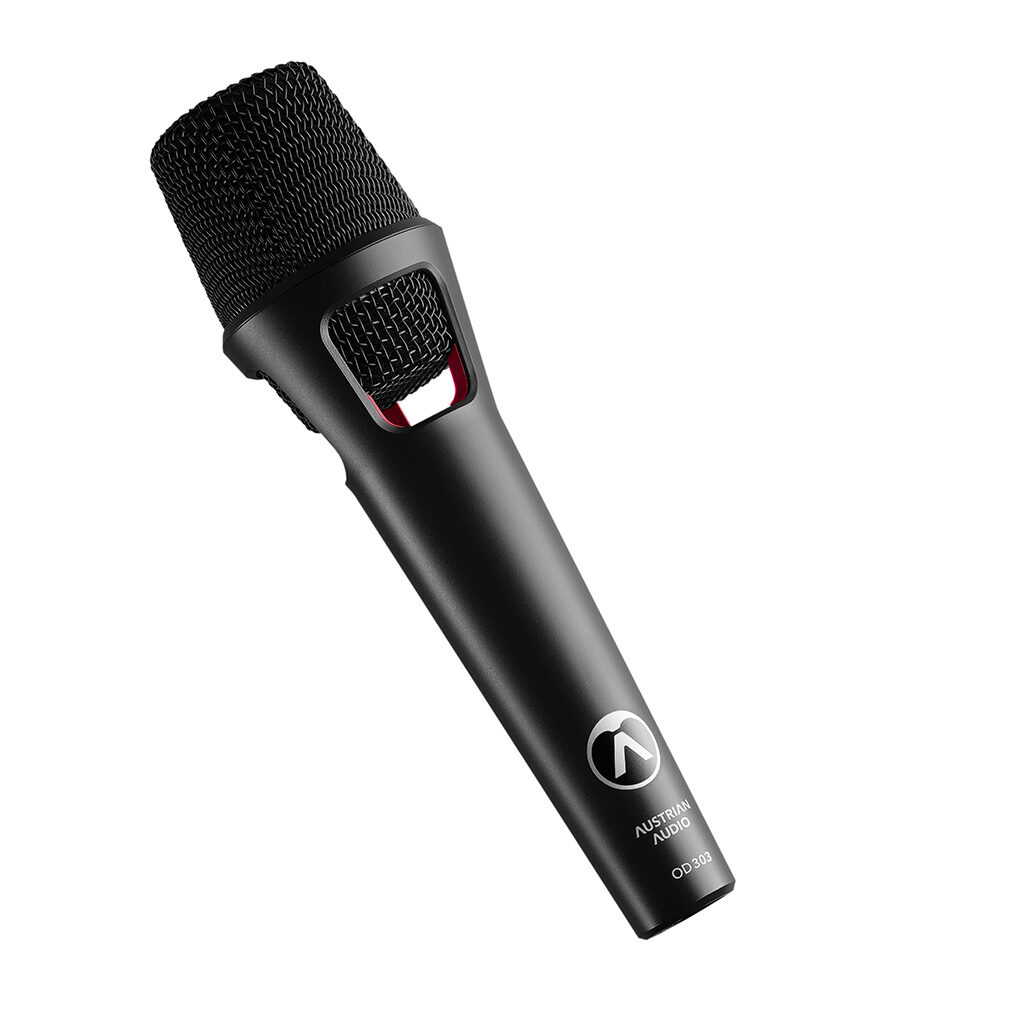
That design is key to what Austrian Audio call their “Open Acoustics” technology. The aim of the design is to negate the effects of ‘cupping’ the mic, which we all know on most dynamic vocal mics turns them into an omni, with feedback ensuing and horrible vocal tone thrown in. I torture tested the OD303 with both hands in the tightest ‘cup’ I could muster and I could barely get the tone to change, let alone feedback to take off in the wedges. I have quizzed the tech heads at Australian distributor Group Technologies as to how this is done, and it’s a tightly held trade secret.
Tonally, the OD303 really suited my baritone/ somewhat tenor voice. Most of the time, I have to add around 4 or 5 dB around 2kHz to give it some intelligibility and interest, and stop it sounding dull and honking. The OD303 brought out the intelligibility without any EQ. I’d be very interested to hear it on a real tenor, and a female vocal. In all, it gave me way more to work with as an engineer than the standard vocal mic we all know and love. It’s easier to cut than add, and the OD303 gives you a very workable signal indeed.
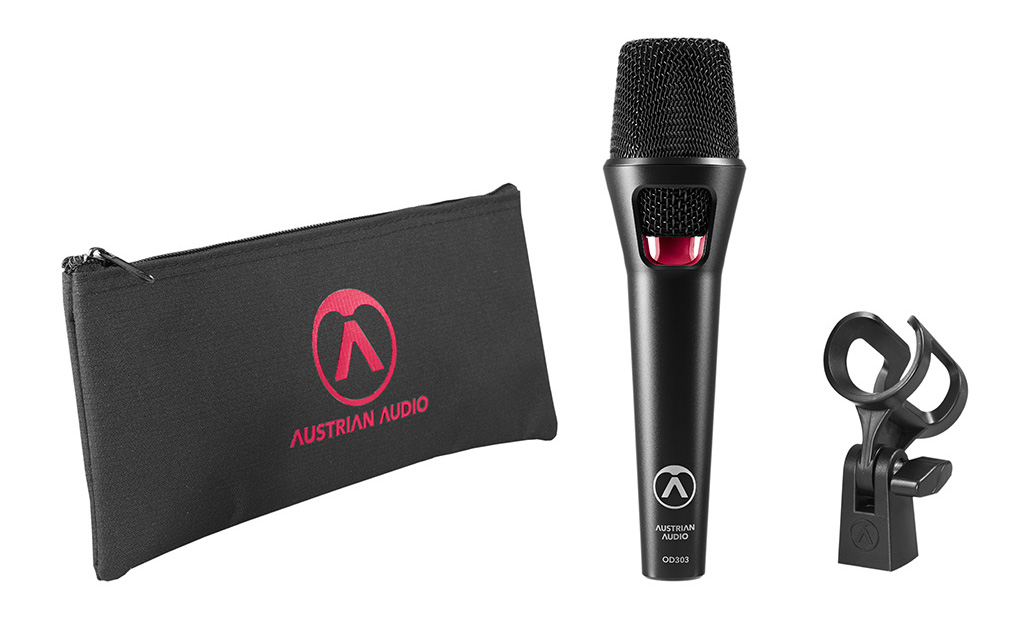
Superior off-axis response is another of Austrian Audio’s point of difference, and this supercardioid was much more sensitive to the sides and rear than the incumbent, making it much more forgiving to those with less- than-ideal mic technique. Handling noise was basically non-existent.
THE SPECS OD303
- Directional characteristic: Supercardioid Frequency range: 35 Hz – 16 kHz Sensitivity: 1.8 mV/Pa
- Pop Noise Protection: 3D Pop Noise Diffuser
- Impedance: 1200 Ω (symmetrical) Load impedance: > 1 kΩ
- Main Connector: XLR 3 pin Dimensions: 194 x 53 x 53 mm
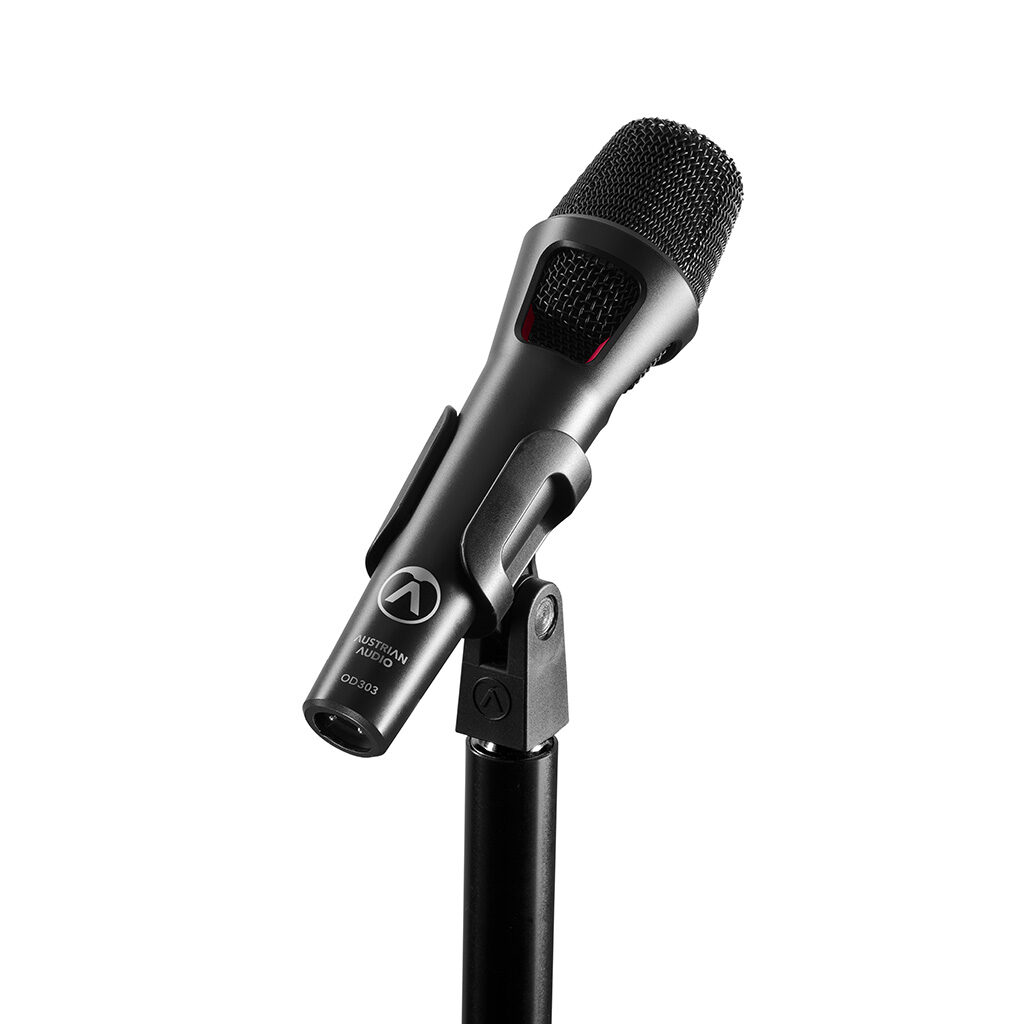
OD505 – The “Active Dynamic”
The OD505 is very similar to the OD303 but adds a couple of features that elevate it to the next level. It is a dynamic mic, but does require +48V to run, as there’s a little circuitry in there helping the sensitivity and output. Next, there’s a switchable HPF at 120Hz. While the OD303 is ‘design and engineered’ in Austria, the OD505 is designed, engineered, and manufactured there.
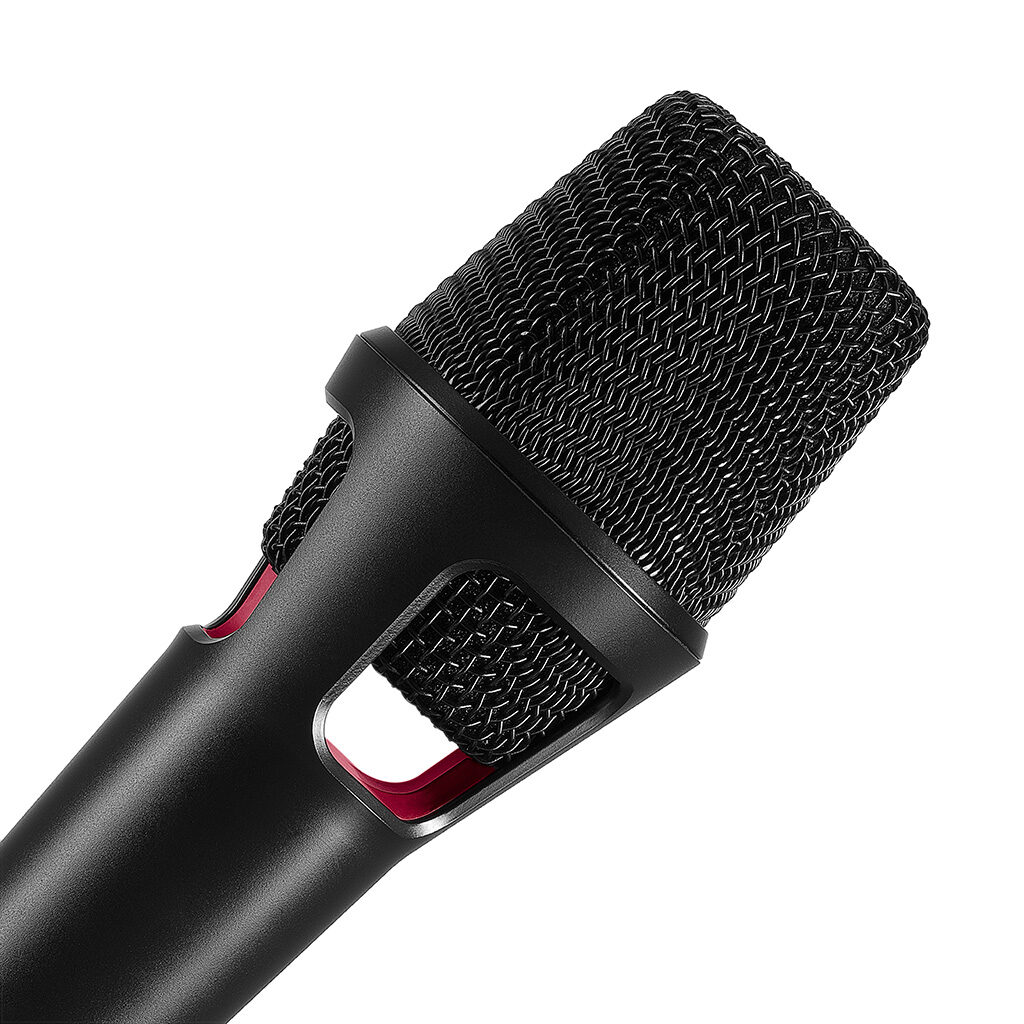
The result is a more premium experience than the OD303. There’s more sensitivity, and it picks up a lot more detail than the OD303. It’s crisper, has more cut-through, and the off-axis response is wider and more sensitive.
With both mics, Austrian Audio have engineered a gentle roll off starting just below 200Hz and a boost at 4-5Khz, and if you decide to exploit the proximity effect, you get a boost at 100Hz. It’s taking the design approach that ‘you were going to EQ it this way anyway.’ It’s not a bad way to go, as I was happy with my vocal tone on a completely flat channel strip. One less thing to have to fiddle with on a gig is always a good thing.
I then put in the high pass and was blown away. On other mics when I have done this, I got exactly what I expected – a roll-off. On the OD505, I got the roll-off, but what felt like an additional 3dB of gain upstream of the filter. It went from cutting through very nicely to absolutely blowing a hole through the mix. If I was mixing a slightly quiet or nervous singer trying to cut through a loud band, this is the mic I’d deploy.
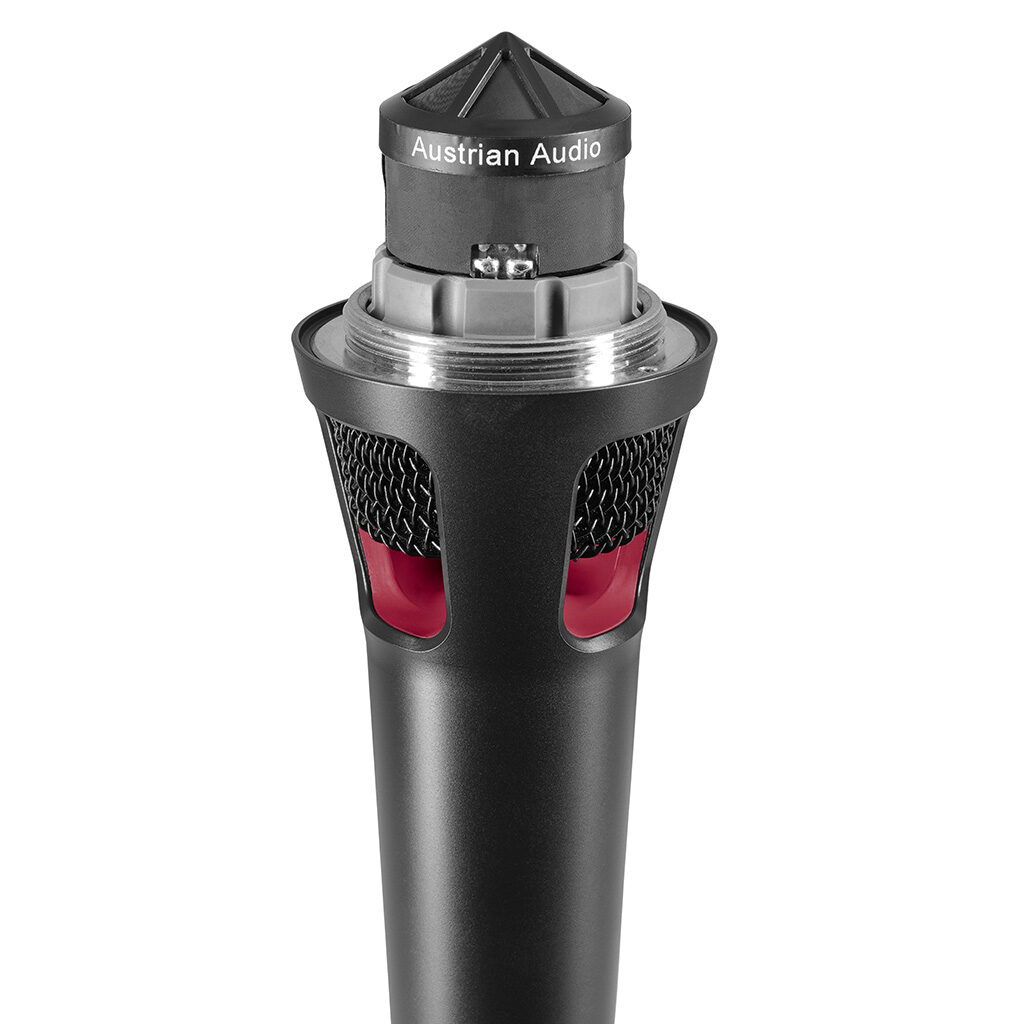
Again, comparing it to something we all know, in this case the ‘world’s most well-known dynamic mic – late 80s redux’, the OD505 comes across as brighter, more forgiving of off-axis shenanigans, more present in the mix without any EQ adjustments, and with the HPF in, a flaming sword cutting through your mix butter.
THE SPECS OD505
- Directional characteristic: Supercardioid Frequency range: 35 Hz – 16 kHz Sensitivity: 4.4 mV/Pa
- Max. SPL: 154 dB SPL
- Low cut filter: 120 Hz (2nd order) Impedance: 275 Ω (symmetrical) Load impedance: > 1 kΩ
- Supply voltage: 48 V (< 1 mA) Main Connector: XLR 3 pin Dimensions: 194 x 53x 53 mm
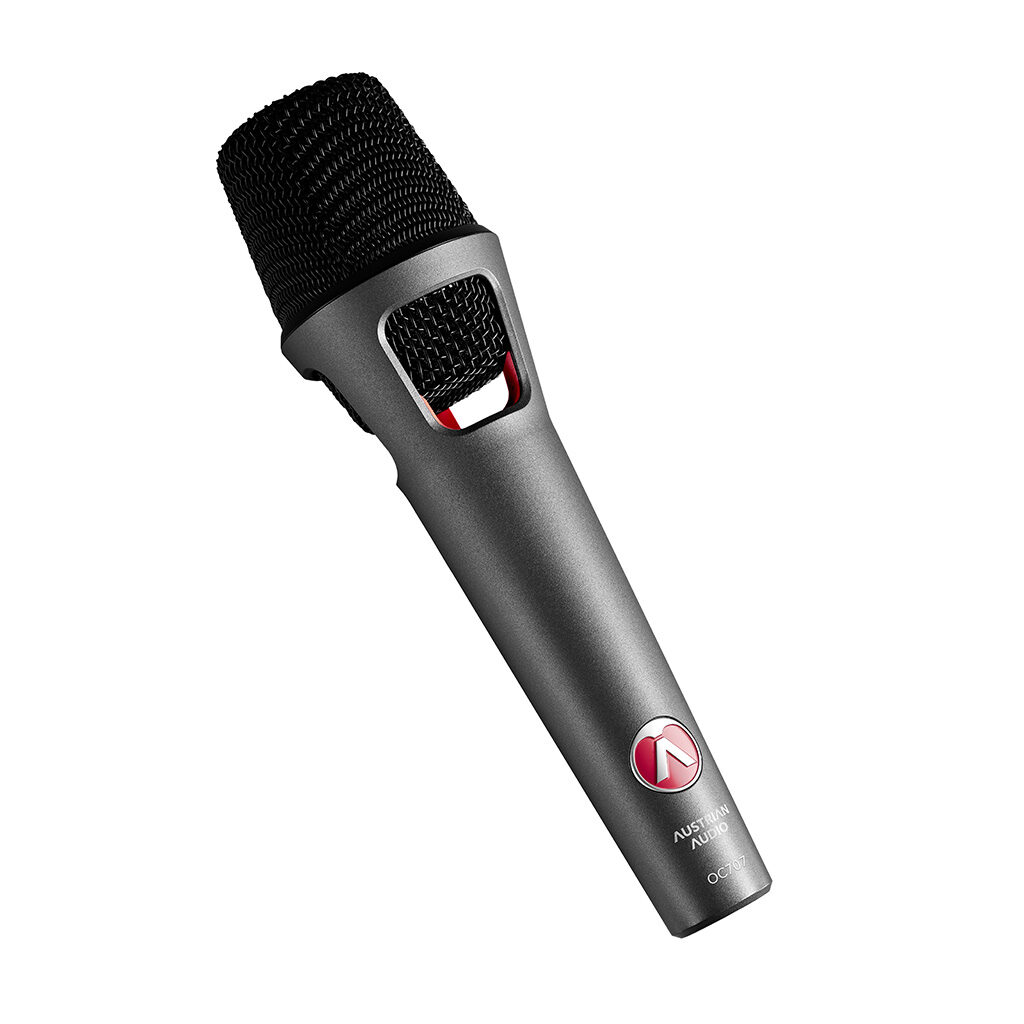
OC707 – The True Condenser
This is no less than a handheld vocal mic that can more than hold its own in the studio. Rugged enough for the stage and detailed enough for the vocal booth, this is a premium mic for capturing great performances.
Another leap up in sensitivity from the OD505, the OC707 would be perfect for outstanding female vocalists across genres, though my first thought was jazz. As we go up the range, the mics made my voice sound more workable (OD303), better (OD505), then naked and what it’s actually like (OC707).
It has a cardioid pattern, though the off- axis sensitivity made it feel wider. A proper condenser mic, it can handle a surprising 150dB, so if you’re having a weird day, you can in fact put it on a kick drum. The frequency plot is a more gentle peak at 5kHz than the ODs, and a little ‘air’ boost at 10kHz. The roll-off from 200Hz down is slightly more gentle than its two siblings.
Compared to the ‘premium handheld condenser made by the same company as the other two mics’, the OC707 was brighter, more sensitive, and more in keeping of the style of vocal mic technique you’d find with an experienced jazz vocalist or old-school diva. It of course has the same Open Acoustics technology as the OD303 or OD505, but we’re way outside of cupping territory here.
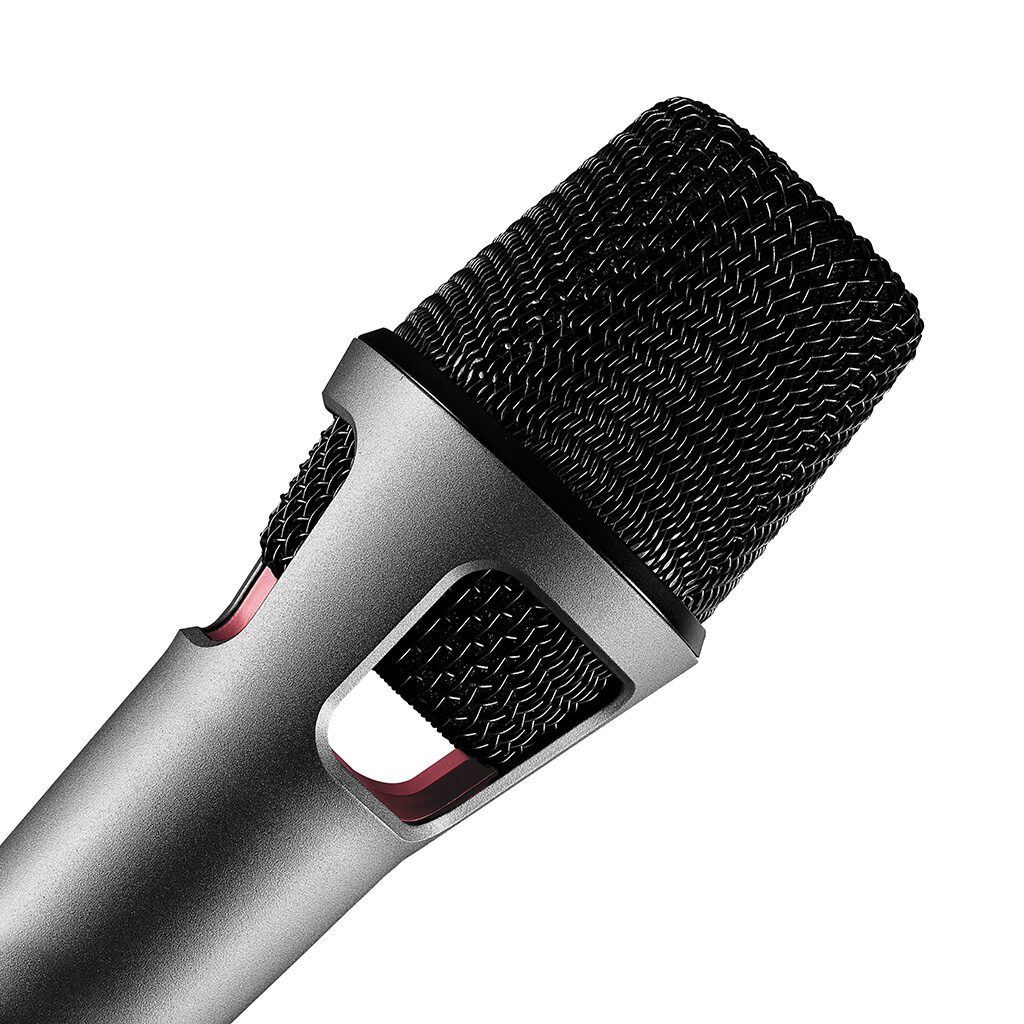
THE SPECS OD707
- Directional characteristic: Cardioid Frequency range: 35 Hz – 20 kHz Sensitivity: 10 mV/Pa
- Equivalent noise level: 19 dB SPL (A) Max SPL: 150 dB SPL
- Low cut filter: 120 Hz (2nd order) Impedance: 275 Ω (symmetrical) Load impedance: > 1 kΩ
- Supply voltage: 48 V (< 2.2 mA) Main Connector: XLR 3 pin Dimensions: 194 x 53 x 53 mm

The Verdict
Austrian Audio have gone from zero to a range of eleven microphones for almost every application within five years. Their entry into the crowded live vocal mic space offers a convincing, and in some cases preferable, product to the existing dominant players in the market. If you find yourself auditioning vocal mics for a vocalist you regularly work live with, the three models in this review should definitely be on the list to try.
Product Info: austrian.audio
Distributor Australia: Group Technologies grouptechnologies.com.au
Distributor New Zealand: Jansen jansen.nz
Subscribe
Published monthly since 1991, our famous AV industry magazine is free for download or pay for print. Subscribers also receive CX News, our free weekly email with the latest industry news and jobs.




